#welsh director
Text
Everytime The Witcher appropriates the welsh language but the has the GALL to mispronounce it, the power of my rage grows
do you know how seldom Welsh gets a fucking look in?! and the you have the gall to pronounce it like its fucking English
#the witcher#welsh#like i want to be excited because YAY WELSH#but then they do that#HE SAID SHAERRAWEDD 'Cher-Wed' i'm going to scream#its not even proper Welsh but if you're going to base your conlang that hard of an existing language i beg of you learn the rules#say it Shere-a-with#i'm going to start showing witcher colang to my nain to cause her psychic damage#i joke but tbh i think she would like that someone is taking the language she had stripped from her as a kid and is reviving it in a new wa#Anya at least says the first part right#to the point i suspect she studied and did her best but the directors fought her on the dd
597 notes
·
View notes
Text
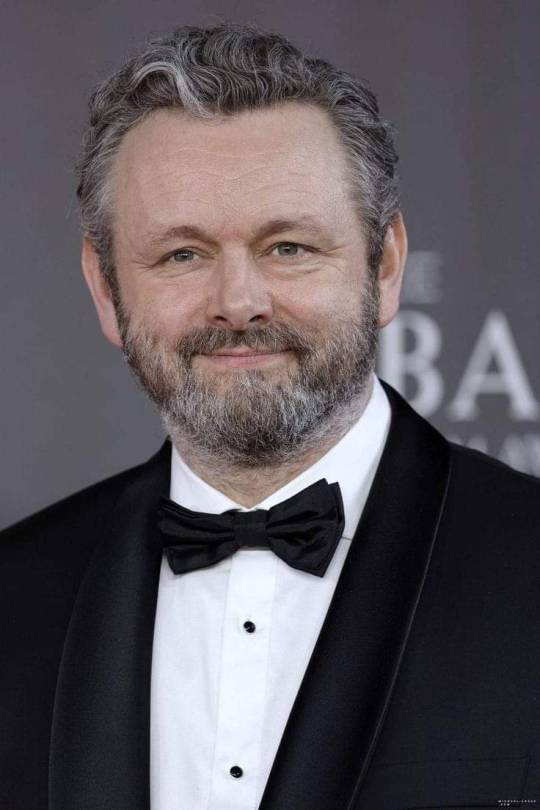
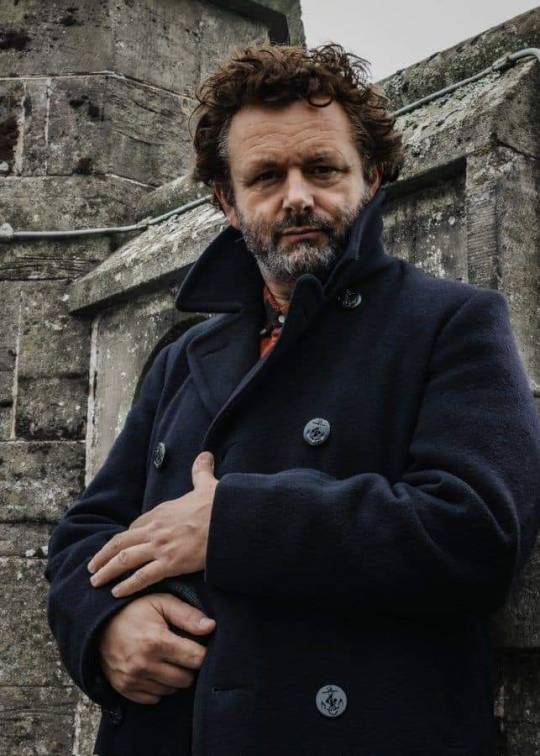


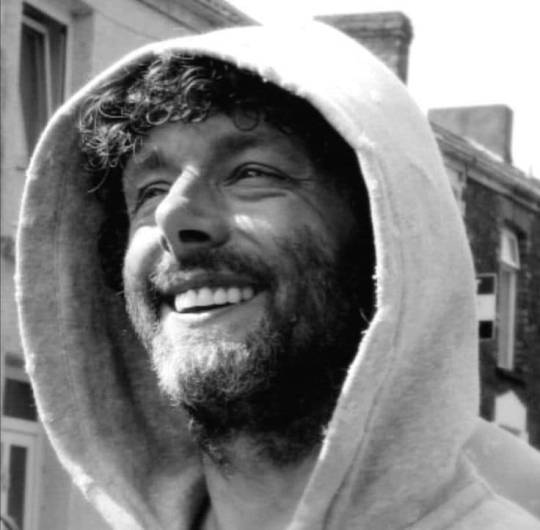





Miscellaneous Michael Sheen, the sweetest. 😊❤️
#michael sheen#welsh seduction machine#Actor#director#actual daddy#Activist#Aziraphale#Lucian#Sunshine
80 notes
·
View notes
Text
Me right now thinking about GO 2 and The Kiss after what Rob Wilkins said today:
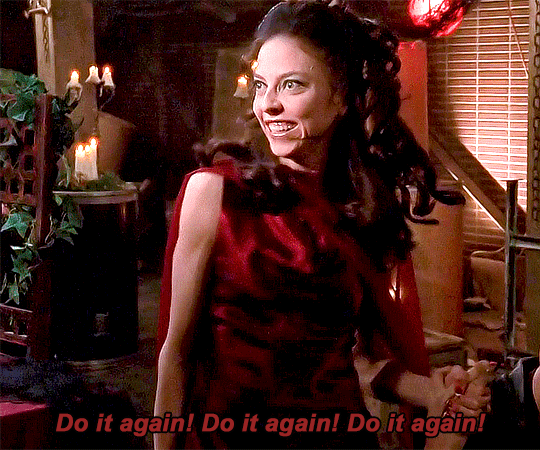
#good omens 2#michael sheen#welsh seduction machine#david tennant#soft scottish hipster gigolo#aziraphale#crowley#ineffable husbands#also of course it meant 'do it again'#there is no other way Michael/Aziraphale would look at David/Crowley#it's giving the rooftop sex scene with Ewan McGregor and Christian Bale in 'Velvet Goldmine'#where the director called 'cut' but they kept going#i can't#i'm feeling a lot of feelings#patiently waiting for the strikes to end so Michael can scream on Twitter all about it#also can we remember that he used the word 'engorged' to describe how he felt hearing about season 2#i'm just saying#thoughts#discourse
51 notes
·
View notes
Text
Minor throwaway sentence in a book on corruption I've just finished was talking about 1930s gangsters and about certain organisations in Chicago which the author stated were more ethnically diverse than the Italian mafia, and whose members were said to have included 'Irish, Welsh, Italian, and Jewish' gangsters.
Now call me sheltered but I've seen MANY Italian American gangsters immortalised in film, I've heard of the Jewish mob, and the police Irish American gangs but I have yet to see a movie about the Welsh mob. As a rule I don't go in for gangster movies but I feel there's an unfilled niche here and also I need more info.
#Might delete this in a bit#On a more serious note given the context of the Great Depression and slumps in the coal mining districts of Britain#I can see why Welsh people who emigrated to America might be form an impoverished immigrant community targeted by organised crime#And possibly my surprise comes from outdated national stereotypes and the fact that popular stereotypes of 1930s gangsters#Rarely include immigrant groups that are largely Protestant (at least in the US- in Glasgow and London it's a different story)#Makes me wonder if all those Catholic Aesthetics that directors who make movies about Italian and Irish mobsters are so fond of#Would play the same with Meredith Davies who may be a crook but at least he regularly attends the Methodist chapel#And is a teetotaller and a fixture in various choirs#Welsh accents are often quite soft too I think I'd be fucking terrified of a Welsh gangster in a movie tbh#To be fair real life organised crime obviously encompassed people from all walks of life I'm more interested in movie depictions here#'More Welsh representation!' 'Ah yes how about as gangsters?' 'Er...'#Less surprised if I come across Scots because eventhough they're privileged in the US English media does seem to view Scottish accents#As threatening so Scots often get roped in to play tough guys and gangsters and villains in all sorts of media#And often they will get an Englishman to play a Scot and Scots to play Eastern Europeans which is also weird#But that's off topic; I am not however used to Welsh villains
26 notes
·
View notes
Photo

Roger Rees (deceased)
Gender: Male
Sexuality: Gay
DOB: 5 May 1944
DOD: 10 July 2015
Ethnicity: White - Welsh
Occupation: Actor, director, playwright
Note: Converted to Judaism in the 1980s
#Roger Rees#lgbt history#homosexuality#mlm#lgbtq#male#gay#1944#rip#historical#white#welsh#actor#director#playwright#jewish
40 notes
·
View notes
Text
there are many things i am a fan of joey batey in the witcher for and being the first person to more or less correctly pronounce a welsh word is now one of them
#the witcher#i admit i'm not an expert on the welsh language but i do know <dd> is pronounced like <th> as in ''this'' or ''then''#so 'gwynbleidd' is not 'gwin-bleyd' but 'gwin-bleyth'#('blaidd' is 'wolf' apparently anyway)#it's just been irking me#celtic languages have been used sporadically throughout the series (every once in a while an irish or irish-like word will show up)#and almost zero times have they been pronounced correctly#so this stood out to me :)#i also want to give credit to the dialect coach who is helping with the elvish language direction#but it was definitely 'bleyd' earlier#whether that was on the particular actor speaking or the director i have no idea#i'm down a language rabbit hole the elder speech language is all i care about now i want to see documentation for it#how close it is to welsh? maybe this is time for me to learn welsh
43 notes
·
View notes
Text
Bright Light Bright Light featuring Mark Gatiss - Next To You
2020
Rod Thomas is a Welsh independent singer-songwriter, based in New York. He incorporates many elements of nu-disco into his music, also branching into synthpop, dance and house music. Two of his albums have reached the top 20 on the UK Independent Albums Chart. Thomas chose the stage name Bright Light Bright Light from a quote spoken by the character Gizmo in the 1984 movie Gremlins.
His fourth album Fun City was a number 1 UK Dance Album hit on its release in September 2020 receiving widespread critical acclaim, and it features a slew of LGBTQ+ talent adding their vocals. Actor/director/writer Mark Gatiss (known from Sherlock) added a spoken word piece on "Next To You". Thomas had previously worked with Gatiss by composing the theme tune for Gatiss's BBC4 series Queers, and appearing as an extra in Gatiss's tv series The League of Gentlemen.
"Next To You" received a total of 38,5% yes votes.
youtube
605 notes
·
View notes
Text
imagining a fromsoftware voice casting director going around some welsh town looking for random 40 year old men with a poetic essence
2K notes
·
View notes
Text
Medieval Warhorses, Repost + additions!
Since people loved my "Preindustrial travel times" post so much, I decided to repost my "Realistic warhorses" info separately from the original link, where it was a response to "how to get the feel of realistic combat."
--
The original link is here.
The "Warhorse" post on my blog, plus a recent addition, is here.
And here's the text for people who want to go down my "grown up horse-girl" rabbit hole right away!
Medieval Warhorses:
First of all: DESTRIERS WERE NOT DRAFT HORSES. Horse/military historians are begging people to stop putting their fantasy knights on Shires, Belgians, and other massive, chunky farm-horses! The best known instance of “a knight needs to get lifted onto their 18-hand draft horse” is a SATIRE (A Yankee in King Arthur’s Court, if I remember right), but somehow laymen decided to take it seriously.
Hell, I think the film’s historians knew that this was extremely inaccurate and begged the director not to do it.
--
For the purposes of this post, I will not get into the different TYPES OF WARHORSES. That is a hyper-fixation for another day, lol.
—
First problem with “Draft horses as warhorses:”
The bulk of modern-day “breeds” are far too recent for a medieval or medieval-fantasy story. Modern horse “breeds” began around the 1700s-1800s, so that’s in the EXTREMELY late-medieval/early-modern period. Before that, most medieval horses were referred to by “TYPE/PURPOSE” and maybe a “Country/Region.” “Spanish/Iberian horses” (the ancestors of modern-day Andalusians, Carthusians, and Lusitanos) were overwhelmingly popular for combat, and other baroque horses were also esteemed.
Destriers are physically average-height at 15 hands high (about 5 feet tall at the shoulder/withers), but the important part is that they are STACKED at 1200-1300lbs when most 15-hand horses are only 900-1000lbs, so that’s a quarter to a third more weight in muscle.
And remember, muscle will not make a given horse look “chubby!” Good ways to get across a warhorse’s muscles in writing is 1) how ROCK SOLID they are when you touch them, 2) their chiseled shoulders, necks, and butts, and 2) when they get into motion, especially for a fight, their muscles will flex and get REALLY defined. The three regions I mentioned are usually the most visible if they’ve got horse tack or a rider on them.
Think of the difference between “regular horse” and “destrier” as “regular Tom Hardy, who looks fit but normal,” versus “Tom Hardy playing Bane, where he put on thirty pounds and his torso and arms look like a fucking tree-trunk.”
Warhorses had nerves of steel, and the best-trained warhorses used could sprint and turn on a dime–they’ve been called “the sports cars of the medieval world.” This is a far cry from huge, sweet, and lumbering draft horses.
Besides Spanish horses, modern-day candidates for destriers would be European cobs (heavier all-purpose horses, large Welsh cobs are the best-known modern breed), and Foundation Quarter Horses (working/stock horses that can herd cattle and race and actually USE their muscles, not the bloated halter-horses who are mostly bred to look “good” to judges).
—
But if the destrier was supposed to be the horse equivalent of “Tom Hardy as Bane” and not “The Mountain from Game of Thrones,” then how could they carry a knight’s armor as well as their own?
First of all, human combat armor is different from JOUSTING armor and it is easily half the weight for better mobility. Warhorses from proper medieval times aren’t shown wearing much horse-armor, even in jousting. The stuff you see in museums is also frequently the custom-made armor for wealthy nobles, who either 1) wore it once or twice a year for public celebrations, which is also why the armor’s in pristine condition instead of dented and bloody like combat armor would be, or 2) wore it because they were rich enough to not want themselves OR their expensive horses to die too soon in combat.
Assuming that all destriers needed to carry 150lbs for an adult armored man, PLUS another 150lbs of the horse’s riding tack and armor, is like people from the years 2500-3000 assuming that everyone with a “car” must have a Lamborghini or a Ferrari that takes up a lot of maintenance (if you want to keep it looking nice, at least) and can go 200 miles per hour.
So the vast majority of realistic warhorses/destriers didn’t get much if any armor, because 1) horse-armor is for princes and dukes, not Count Whoever’s third son or his nephew that he tossed out on adulthood with barely any money, and 2) horse-armor is going to weigh down your FAST and NIMBLE warhorse. (Remember: Knights wanted sports cars, not tanks!) Take a look at the horses and knights of the website called “Destrier!” Most horses there aren’t notably tall, and they mostly wear head-armor and fancy but not heavy horse-tack like capes, instead of full barding.
Another reason average/short warhorses were preferred is for medieval safety issues: You wanted to mount your horse from the ground without help. The famous knight Jean Le Maingre was so dedicated to fighting that he could VAULT onto his horse in armor, without touching the stirrups. His instructions are, essentially, “put on your armor, find your horse, put your hands on the horse’s back/saddle, and FUCKING JUMP.”
Unless you’re seven feet tall or a gymnast, you’re not jumping onto an 18-hand draft horse.
So all those Red Dead Redemption animations where you get to alley-oop your way onto your loyal steed? POSSIBLE, IF YOU ARE CRAZY/ANGRY ENOUGH.
Quick note: In ancient Ireland, they refer to a “steed-leap” that nobles, warriors, and other “people rich enough to own RIDING horses” were trained to use–with the important distinction that Gaelic nobles often took pride in either using saddles without stirrups, or NOT USING SADDLES TO PUT ANY STIRRUPS ON. So the bulk of Gaelic Irish nobles could theoretically go Red Dead Redemption on your ass.
—
And the third reason most combat-ready warhorses didn’t get armor is because infantry (the vast majority of most medieval armies) just had a low chance of hitting them in the first place.
First of all, most horses are already faster than people. Destriers were EXCEPTIONALLY fast as the cream of the crop. For the horse to need armor, someone needs a good chance of hitting the horse.
Second, most horses are hard to kill physically because horses don’t tend to like getting stabbed or shot at, so they will likely try to kill YOU, which means that a knight and his horse are TWO fighters who are both very angry and very protective of each other. Most people love their horses, and many combatants share intense bonds! IMAGINE IF YOUR HORSE IS ALSO YOUR SQUAD-MATE!
And last of all, most horses are hard to kill mentally because when you want to use cavalry, you ALSO want the other side’s infantry to get consumed by panic and bolt for their lives, away from their companions and AWAY FROM THE CHARGING HORSES. (Which routinely leads to a slaughter, often called a “rout” in period literature, or a “curb-stomp battle” on TV Tropes.) While most knights could dish out one-on-one duels against EACH OTHER, a knight against a foot-soldier is going to have a huge and explicitly unfair advantage if the soldier is not specifically trained and equipped to take them on.
See, when you get a herd of knights on their steeds, the noise and the wave of horseflesh charging at you is going to make your reptile-brain instincts scream “NOPE NOPE NOPE, WE GOTTA GO!!!”
That instinct is so strong that infantry ACTORS in movies–who know that this is not a real war, and the riders don’t actually want to kill them–still routinely break formation and run.
It was possible to stop cavalry with infantry and end up slaughtering them instead of getting routed–it was just extremely notable.
Also, unless you’re specifically going for blood: You don’t WANT to slaughter a whole formation of knights! That means you’ve just pissed away a WHOLE lot of money that the knights represent!
You killed the horses that you could have used for your own side, and possibly bred for more high-end horses! You ruined the armor that you could have used for your own side, or at least melted down for high-quality, already-mined metal! You killed the knights that you could have sweetened up and used for your own side–or more likely, told their families to pay you if they wanted them home intact.
Barely anyone remembers that knights were as good for HOSTAGES as they were for actually fighting. (Except for Game of Thrones, and it’s still only plot-relevant for Jaime Lannister and Theon Greyjoy, and they explicitly did NOT get the protection a noble hostage should have.) It’s noted that Agincourt was a GREAT ending for England because capturing all those French nobles earned them TWENTY YEARS’ WORTH of regular income in ransoms. If they hadn’t won and gotten all that sweet, sweet French money, they would have been bankrupted and depopulated instead.
—
Two more strikes I’d feel are appropriate for “not wanting draft-type horses in combat:”
-Logistics 1: Too much food, too much hassle. Horses are already notorious for eating a lot, and a DRAFT horse that’s 2000lbs instead of 1200lbs will eat twice as much. No army wants to use their fodder for only half the number of horses they’d expect.
-Logistics 2: Too much hair, too much hassle. Shires and other British horses often have feathering on their legs, and anyone with long hair knows that loose hair/fur is a fucking PAIN. You can braid a horse’s mane and tail, but if you’re one of the many average/poor knights who DON’T have servants to take care of your horse for you, do you want to spend extra time cleaning and combing out your horse’s LEGS instead of necessary things? Like feeding them, grooming them, and checking for wounds? Nope, you’ll probably shave the feathering off or just pick a horse that doesn’t have it.
-Extra note on Friesian horses, who are RIDICULOUSLY common in “medieval” movies: Friesian horses are technically baroque horses in body form (Strong-boned! Big necks and butts!), but they’re also over-used in general, so most horse folks are sick of seeing them in movies. And if you don’t have the right kind of MODERN Friesian, you’ll probably be a laughingstock in addition to an eye-roll.
Some strains of modern Friesians are from carriage-horse lines, often referred to as “big movers.” This means “fun to LOOK AT, but terrible to RIDE.” Because, you know, those strains of Friesians weren’t meant for riding, but for PULLING CARRIAGES. Their movements are big, dramatic, and flashy… and their trot is notorious for bouncing people out of the saddle with every step. Not something you want for a knight who fills his opponents with terror.
A good riding horse’s movements are usually smooth and low to the ground, often described as “floating” and “effortless.”
—
A horse-note that I can’t figure out where to put: Many Western cultures love the idea of fiery stallions (intact male horses) for their noble knights and kings to ride into battle on, but realistically, stallions are only half of a given horse population. Many Western stallions are also gelded if they’re not the cream of the crop (which is probably at least the bottom half of the male horse population). So mares can be used by at least half of a realistic formation who just wants a warhorse, and doesn’t care about aesthetics or masculinity.
Also, mares can be ruthless and stallions can be nervous wrecks! Horses are living creatures, with personalities and feelings!
Horses also aren’t very sexually dimorphic, so a 1200lb war mare is DEFINITELY a match for a 1300lb war stallion. And remember how Loras Tyrell used a mare in heat to distract The Mountain’s stallion? That happens with a lot of stallions… almost like they’re living creatures, with instincts that they can’t always control! So if you know when your girl is ready to go every month, you can play dirty in a joust, too!
Just remember that you’re taking an equal risk, since your mare will possibly try to let a stallion mount her instead of fighting. You will either need to bail when she starts making googly-eyes, or you need to know you have ABSOLUTE loyalty from her, and she will listen to YOU instead of “the hot dude I just met five minutes ago!” HORSES ARE LIVING CREATURES, WITH INSTINCTS THAT THEY CAN’T ALWAYS CONTROL.
Then geldings will be used by at least another quarter of “the knights who cannot afford a horse good enough to keep his testicles,” so that leaves “a quarter or less” of knights who can realistically be mounted on stallions.
WORSE NEWS: If you geld a stallion too late (usually once they’re MOSTLY physically mature at 4-5 years old), that risk may never go away–so you’ve got a gelding who’s not breeding quality, but he’s still chasing mares in heat and fighting other stallions in turf battles, without understanding that he can no longer make babies!
On the other hand, some cultures don’t geld stallions because they view it as unnecessary or outright unnatural… but they also don’t want half the horse population distracted by pretty mares, or fighting with other stallions who walk by the pasture, so those cultures breed them to be sweet and easily managed (outside of battle, at least).
In short: ALL HORSES HAVE POTENTIAL TO BE WARHORSES, WHETHER THEY HAVE BALLS OR NOT.
—
Update, Feb 2 – Another day to expand on that “Different types of warhorses” mention!
Much like the common misconception of “all knights must be at least 6 feet tall and have 200 pounds of muscle” varied in real life due to genetics, cultural values, and logistics problems, the assumption that “all knights MUST have top-quality destriers that cost seven times the price of a normal horse” was not the case for the vast majority of “knights.”
Knights would have either “the best horse they could AFFORD” or “the best horse FOR THEIR SPECIALTY.”
A poor knight, or one of the early Middle Ages, would have “one horse that they’re with all the time;” that horse may not be pretty or come from fancy breeding lines, but they would get the job done and most definitely be taken care of. A wealthy knight of the later Middle Ages, when everything got more expensive and status more codified and finicky, would have two or three horses–one horse for warfare and one for regular riding, with the really wealthy knights having a third packhorse to carry all their stuff. (Moreover, they would have at least one servant to help take care of three horses.)
A muscled sprinter like a destrier is better in tight quarters and for short bursts of speed; to bring in the modern example of a classic/Foundation Quarter Horse, who are ideally “short-legged and low to the ground,” these dudes can literally hit the ground running and reach top speed in a few steps/seconds, so compare that to a sports-car going from zero to sixty miles. The tradeoffs?
1) You need to be able to hang the fuck on… and to avoid getting pitched into a wall/enemy WHEN THEY STOP.
2) That full-throttle gallop will really wear out your horse. A good commander will not bring out their heavy cavalry right away, because you also have to figure out how to get them back from the enemy’s side of the field.
In very simplistic terms, this is one of several problems that the battle of Agincourt had for the French; you had a bunch of hoity-toity noblemen with no proper battle experience who all wanted to do things their own way… and how do medieval noblemen usually want to fight a war? JUST FLOOR IT AND HIT THINGS AS HARD AS YOU CAN.
That went so badly that the recorded death-toll for the French side of Agincourt has been commented as “a roll call for French nobles.”
A destrier would not be suitable for a scout or light-cavalry; they’d need lighter and ground-covering horses to cover rough terrain, and to chase down the enemy for long stretches–akin to a modern-day Thoroughbred. For period pieces they might resemble an Akhal-Teke or “Turkmene” horse. A modern-day Thoroughbred horse can “only” reach forty miles per hour at a gallop, but they can keep that up for a whole mile or longer. So now your knight’s problem is “Hanging on for two or three whole minutes,” and anyone in performing or athletics will explain how long and agonizing a few minutes would feel on a rampaging horse. Have you seen how stacked a racing jockey is? The general consensus I’ve seen from equestrians is that barely anyone in any other horse-discipline is that built.
Meanwhile, an ideal light-cavalry horse would need longer legs for a ground-covering stride, and they may or may not be taller as well; as seen in the Akhal-Teke article, many endurance horses tend to show a lot more ribs and bones than other breeds, due to how lean they are. But think of them less as a dainty riding horse and more like a hunting greyhound/sighthound–all muscle, no fat!
The other type of light-cavalry horse would likely be a pony, used to going for miles on rough terrain, with little if any feed.
EDIT Feb 4, 2024: My post got cut off, so here's the rest of it!
The other type of light-cavalry horse would likely be a pony, used to going for miles on rough terrain, with little if any feed.
A period-accurate scout's horse was known as the Irish hobby, ridden by their eponymous hobelar troops. These little dudes were VERY little and about 12-14 hands high (48-54 inches, or 4 feet tall to bit under five feet tall). They were known to cover 60-70 miles a day in their raids, which my "preindustrial traveling" post notes is the EXTREME upper end of mounted distance travel. Their modern descendant is likely to be the Irish Connemara Pony.
Very wealthy and/or lucky European horsemen could probably manage to buy/steal an Arabian horse, as they remain exceptional endurance horses to this day. However, excessively cold/wet climates will need a lot of upkeep for a desert-bred horse to stay healthy.
While Arabians are known for their adorable "dished faces," this is not actually required! Many well-bred native lines have a regular face (ie, a "straight nose/profile") but they are from well-bred parents and have the capabilities of other Arabians. To the other extreme, you have some modern show/halter lines with REALLY exaggerated heads that hit a lot of people's "Uncanny valley" buttons, and they find it creepy/weird instead of refined. This kind of "seahorse face" would NOT be seen in a period piece.
Notice how the smaller a horse gets, the more ground it can cover? This is partly because size only matters TO AN EXTENT for "how long a horse goes," and partly because of physics! Less weight for a horse to drag around on its own body means more energy for putting miles behind them!
168 notes
·
View notes
Text

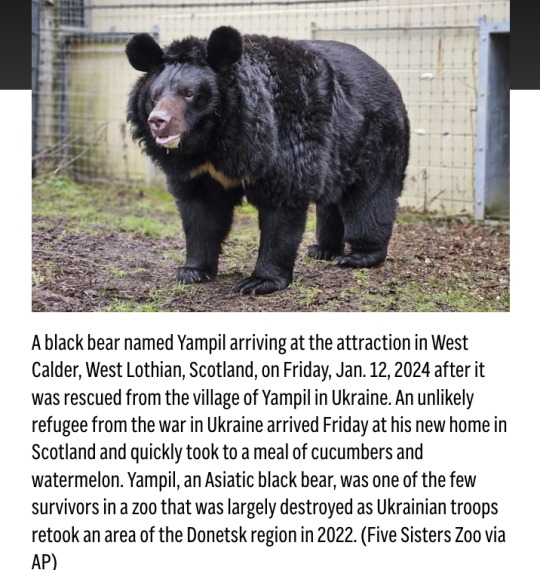
By Brian Melley, AP News
13 January 2024
LONDON (AP) — An unlikely refugee from the war in Ukraine — a rare Asiatic black bear — arrived at his new home in Scotland on Friday and quickly took to a meal of cucumbers and watermelon.
The 12-year-old Yampil was named for a village in the Donetsk region where he was one of the few survivors found by Ukrainian troops in the remains of a bombed-out private zoo.
Yampil, who had previously been called Borya, was discovered by soldiers who recaptured the devastated city of Lyman during the Kharkiv counteroffensive in the fall of 2022, said Yegor Yakovlev of Save Wild, who was among the first of many people who led the bear to a new life.
The bear was found in a menagerie that had long been abandoned by its owners.
Almost all the other animals had died of hunger, thirst or were struck by bullets or shrapnel and some were eaten by Russian troops.
Yampil narrowly missed the same fate, suffering a concussion from a projectile that landed nearby.
“The bear miraculously survived,” said Yakovlev, also director of the White Rock Bear Shelter, where the bear recovered.
“Our fighters did not know what to do with him, so they started looking for rescue.”
What followed was an odyssey that your average bear rarely makes, as he was moved to Kyiv for veterinary care and rehab, then shipped to a zoo in Poland, then to an animal rescue in Belgium, where he spent the past seven months, before landing in the United Kingdom.
Brian Curran, owner of Five Sisters Zoo in West Calder, Scotland, said his heart broke when he learned of the plight of the threatened Asiatic black bear.
“He was in terrible condition; five more days and they wouldn’t have been able to save him,” Curran said. “We were just so amazed he was still alive and well.”
The bear was skinny but not malnourished when he was found, said Frederik Thoelen, a biologist at the Nature Help Center in Belgium.
He now is estimated to weigh a healthy 440 pounds (200 kilograms), Thoelen said.
The nature center in Belgium, which usually treats injured wildlife and returns them to their natural settings, has taken several animals rescued from the war in Ukraine, including a wolf, a caracal cat and four lions, though those animals had not experienced the ordeal Yampil endured.
It was remarkable how calm Yampil was when he arrived in Belgium, Thoelen said.
The bear was trained in the past two weeks to move from his enclosure to the crate that would transport him across Belgium to Calais, France, then across the English Channel on a ferry to Scotland.
Pastries from a local bakery were used for good measure to lure him Thursday into the cage, where he was sedated for the journey.
“We want to use the food that he likes most, and for most bears — and for people also — it’s sweet, unhealthy foods,” Thoelen said.
Thoelen had a sense of the bear’s weight as he drove the crate to the port.
“Every time when we had a red light or a traffic jam, when the bear moved a little bit, you could feel the van moving also,” he said.
“You could feel it was a heavy animal in the back of the car.”
Yampil arrived at the zoo about 15 miles (25 kilometers) west of Edinburgh and immediately made himself at home.
He feasted on cukes — said to be his favorite food — and melon, said Adam Welsh, who works at Five Sisters.
The Asiatic black bear is listed on the International Union for Conservation of Nature’s Red List of Threatened Species as vulnerable to extinction in the wild, where it can be found in central and southern Asia, Russia, and Japan.
It’s known for the distinctive white crescent patch on its chest that gives it the nickname moon bear. It can live for up to 30 years in zoos.
It’s not clear if the bear will go into hibernation. The winter has been warmer than usual but colder days are on the horizon.
The zoo has other bears, but Yampil is the only Asian bear and unique in other ways.
“We’ve had circus bears, for example, that have been rescued,” Welsh said.
“We’ve had bears rescued from places like roadside restaurants where they’ve been used as kind of roadside attractions and been kept in subpar conditions. But this is the first time that we’ve worked with an animal that’s been rescued from a war zone.”
youtube
Scottish zoo welcomes black bear which survived war in Ukraine
13 January 2024
🖤🐻🤎
#Asiatic black bear#Ukraine#Scotland#Yampil#Borya#Save Wild#White Rock Bear Shelter#Five Sisters Zoo#Nature Help Center#Belgium#Poland#International Union for Conservation of Nature’s Red List of Threatened Species#moon bear#save animals#protect wildlife#threatened species#refugee bear#private zoo#Youtube
183 notes
·
View notes
Text
Michael Sheen: Prince Andrew, Port Talbot and why I quit Hollywood
When Michael Sheen had an idea for a dystopian TV series based in his home town of Port Talbot, in which riots erupt when the steel works close, he had no idea said works would actually close — a month before the show came to air. “Devastating,” he says, simply, of last month’s decision by Tata Steel to shut the plant’s two blast furnaces and put 2,800 jobs at risk.
“Those furnaces are part of our psyche,” he says. “When the Queen died we talked about how psychologically massive it was for the country because people couldn’t imagine life without her. The steel works are like that for Port Talbot.”
Sheen’s show — The Way — was never meant to be this serious. The BBC1 three-parter is directed by Sheen, was written by James Graham and has the montage king Adam Curtis on board as an executive producer. The plot revolves around a family who, when the steel works are closed by foreign investors, galvanise the town into a revolt that leads to the Welsh border being shut. Polemical, yes, but it has a lightness of touch. “A mix of sitcom and war film,” Sheen says, beaming.
But that was then. Now it has become the most febrile TV show since, well, Mr Bates vs the Post Office. “We wanted to get this out quickly,” Sheen says. With heavy surveillance, police clamping down on protesters and nods to Westminster abandoning parts of the country, the series could be thought of as a tad political. “The concern was if it was too close to an election the BBC would get nervous.”
I meet Sheen in London, where he is ensconced in the National Theatre rehearsing for his forthcoming starring role in Nye, a “fantasia” play based on the life of the NHS founder, Labour’s Aneurin “Nye” Bevan. He is dressed down, with stubble and messy hair, and is a terrific raconteur, with a lot to discuss. As well as The Way and Nye, this year the actor will also transform himself into Prince Andrew for a BBC adaptation of the Emily Maitlis Newsnight interview.
Sheen has played a rum bunch, from David Frost to Tony Blair and Chris Tarrant. And we will get to Bevan and Andrew, but first Wales, where Sheen, 55, was born in 1969 and, after a stint in Los Angeles, returned to a few years ago. He has settled outside Port Talbot with his partner, Anna Lundberg, a 30-year-old actress, and their two children. Sheen’s parents still live in the area, so the move was partly for family, but mostly to be a figurehead. The actor has been investing in local arts, charities and more, putting his money where his mouth is to such an extent that there is a mural of his face up on Forge Road.
“It’s home,” Sheen says, shrugging, when I ask why he abandoned his A-list life for southwest Wales. “I feel a deep connection to it.” The seed was sown in 2011 when he played Jesus in Port Talbot in an epic three-day staging of the Passion, starring many locals who were struggling with job cuts and the rising cost of living in their town. “Once you become aware of difficulties in the area you come from you don’t have to do anything,” he says, with a wry smile. “You can live somewhere else, visit family at Christmas and turn a blind eye to injustice. It doesn’t make you a bad person, but I’d seen something I couldn’t unsee. I had to apply myself, and I might not have the impact I’d like, but the one thing that I can say is that I’m doing stuff. I know I am — I’m paying for it!”
The Way is his latest idea to boost the area. The show, which was shot in Port Talbot last year, employed residents in front of and behind the camera. The extras in a scene in which fictional steel workers discuss possible strike action came from the works themselves. How strange they will feel watching it now. The director shakes his head. “It felt very present and crackling.”
One line in the show feels especially crucial: “The British don’t revolt, they grumble.” How revolutionary does Sheen think Britain is? “It happens in flare-ups,” he reasons. “You could say Brexit was a form of it and there is something in us that is frustrated and wants to vent. But these flare-ups get cracked down, so the idea of properly organised revolution is hard to imagine. Yet the more anger there is, the more fear about the cost of living crisis. Well, something’s got to give.”
I mention the Brecon Beacons. “Ah, yes, Bannau Brycheiniog,” Sheen says with a flourish. Last year he spearheaded the celebration of the renaming of the national park to Welsh, which led some to ponder whether Sheen might go further in the name of Welsh nationalism. Owen Williams, a member of the independence campaigners YesCymru, described him to me as “Nye Bevan via Che Guevara” and added that the actor might one day be head of state in an independent Wales.
Sheen bursts out laughing. “Right!” he booms. “Well, for a long time [the head of state] was either me or Huw Edwards, so I suppose that’s changed.” He laughs again. “Gosh. I don’t know what to say.” Has he, though, become a sort of icon for an independent Wales? “I’ve never actually spoken about independence,” he says. “The only thing I’ve said is that it’s worth a conversation. Talking about independence is a catalyst for other issues that need to be talked about. Shutting that conversation down is of no value at all. People say Wales couldn’t survive economically. Well, why not? And is that good? Is that a good reason to stay in the union?”
On a roll, he talks about how you can’t travel from north to south Wales by train without going into England because the rail network was set up to move stuff out of Wales, not round it. He mentions the collapse of local journalism and funding cuts to National Theatre Wales, and says these are the conversations he wants to have — but where in Wales are they taking place?
So, for Sheen, the discussion is about thinking of Wales as independent in identity, not necessarily as an independent state? “As a living entity,” he says, is how he wants people to think about his country. “It’s much more, for me, about exploring what that cultural identity of now is, rather than it being all about the past,” he says. “We had a great rugby team in the 1970s, but it’s not the 1970s anymore and, yes, male-voice choirs make us cry, but there are few left. Mines aren’t there either. All the things that are part of the cultural identity of Wales are to do with the past and, for me, it’s much more about exploring what is alive about Welsh identity now.”
You could easily forget that Sheen is an actor. He calls himself a “not for profit” thesp, meaning he funds social projects, from addiction to disability sports. “I juggle things more,” he says. “Also I have young kids again and I don’t want to be away much.”
Sheen has an empathetic face, a knack of making the difficult feel personable. And there are two big roles incoming — a relief to fans.
Which leads us to Prince Andrew. “Of course it does.” This year he plays the troubled duke in A Very Royal Scandal — a retelling of the Emily Maitlis fiasco with Ruth Wilson as the interviewer. Does the show go to Pizza Express in Woking? “No,” Sheen says, grinning. Why play the prince? He thinks about this a lot. “Inevitably you bring humanity to a character — that’s certainly what I try to do.” He pauses. “I don’t want people to say, ‘It was Sheen who got everybody behind Andrew again.’ But I also don’t want to do a hatchet job.”
So what is he trying to do? “Well, it is a story about privilege really,” he says. “And how easy it is for privilege to exploit. We’ve found a way of keeping the ambiguity, because, legally, you can’t show stuff that you cannot prove, but whether guilty or not, his privilege is a major factor in whatever exploitation was going on. Beyond the specifics of Andrew and Epstein, no matter who you are, privilege has the potential to exploit someone. For Andrew, it’s: ‘This girl is being brought to me and I don’t really care where she comes from, or how old she is, this is just what happens for people like me.’”
It must have been odd having the prince and Bevan — the worst and best of our ruling classes — in his head at the same time. What, if anything, links the men? “What is power and what can you do with it?” Sheen muses, which seems to speak to his position in Port Talbot too. Nye at the National portrays the Welsh politician on his deathbed, in an NHS hospital, moving through his memories while doped up on meds. Sheen wants the audience to think: “Is there a Bevan in politics now and, if not, why not?”
Which takes us back to The Way. At the start one rioter yells about wanting to “change everything” — he means politically, sociologically. However, assuming that changing everything is not possible, what is the one thing Sheen would change? “Something practical? Not ‘I want world peace’. I would create a people’s chamber as another branch of government — like the Lords, there’d be a House of People, representing their community. Our political system has become restrictive and nonrepresentational, so something to open that up would be good.”
The actor is a thousand miles from his old Hollywood life. “It’d take a lot for me to work in America again — my life is elsewhere.” It is in Port Talbot instead. “The last man on the battlefield” is how one MP describes the steel works in The Way, and Sheen is unsure what happens when that last man goes. “Some people say it’s to do with net zero aims,” he says about the closure. “Others blame Brexit. But, ultimately, the people of Port Talbot have been let down — and there is no easy answer about what comes next.”
56 notes
·
View notes
Text
AMC Picks Up Captain Nemo Origin Series ‘Nautilus’ From Disney, Plans to Air Show in 2024
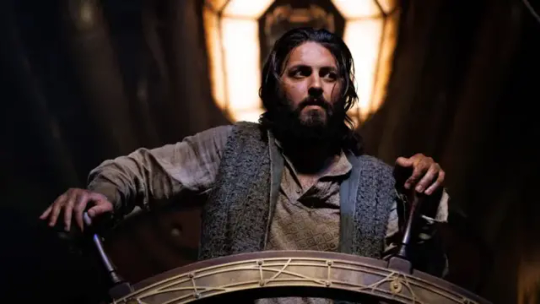
The Captain Nemo origin story series “Nautilus” lives on, with AMC Networks licensing the U.S. and Canadian linear and streaming rights to the live-action series from Disney Entertainment.
The 10-episode show was originally slated to air on Disney+, but it was announced back in August that the show was not going forward at the streamer as part of a wide-ranging cost cutting initiative at the Mouse House.
AMC and AMC+ will now air the show as a special television event in 2024, with an exact premiere date to be announced later. Inspired by Jules Vernes’ “Twenty Thousand Leagues Under the Sea,” the show will explore the early life of Captain Nemo, who is played by Shazad Latif. The character is described as “an Indian Prince robbed of his birthright and family, a prisoner of the East India Mercantile Company and a man bent on revenge against the forces that have taken everything from him.”
“’Nautilus’ is a big, sweeping drama that is sure to appeal to fans of our Anne Rice Immortal Universe and other buzzy and fan-forward series like ‘Orphan Black: Echoes,’” said Ben Davis, executive vice president of original programming for AMC Networks and AMC Studios. “We are looking forward to bringing it to AMC+ and AMC as a special television event next year.”
Along with Latif, the cast of the show includes Georgia Flood, Thierry Fremont and Céline Menville, with guest appearances from Richard E. Grant, Anna Torv and Noah Taylor.
The series was developed and produced by Moonriver TV’s Xavier Marchand and Seven Stories’ Anand Tucker. James Dormer serves as writer and executive producer. Johanna Devereaux, Chris Loveall, Colleen Woodcock, and Daisy Gilbert also executive produce. Cameron Welsh serves as producer. Michael Matthews was the lead director.
“I am hugely excited that the efforts of everyone involved in the making of the show will be seen on such a prestigious network,” said Dormer.
“We are so thrilled to present the epic adventures of Captain Nemo and his legendary submarine The Nautilus alongside the other incredible AMC universes,” said Marchand and Tucker. “The series will take viewers on a breathtaking journey with Nemo and his crew, battling terrifying creatures and the dark forces of the British Empire.”
“Nautilus” is distributed by Disney Entertainment and acknowledges the support from the Australian Government’s Location Incentive and from the Queensland Government via Screen Queensland’s Production Attraction Strategy.
Source: The Variety
88 notes
·
View notes
Note
Does everyone know Rob Stringer's brother Howard Stringer has been an executive director at BBC since 2012. I'm sure he put in and upholds Louis om-going blacklisting on behalf of Sony/Rob. Dirty games. It's incredible what Louis has achieved.
I… had no idea.

Sir Howard Stringer (born 19 February 1942) is a Welsh-American businessman. He had a 30-year career at CBS, culminating in him serving as the president of CBS News from 1986 to 1988, then president of CBS from 1988 to 1995. He served as chairman of the board, chairman, president and CEO of Sony Corporation from 2005 to 2012.[3] He is also the head of the board of trustees of the American Film Institute and now serves as a non-executive director of the BBC.
x
65 notes
·
View notes
Note
thea did you check out the trailer for the series msheen is directing? it's releasing this month too
I did! it ACTUALLY looks so good. I’m truly obsessed with this guy’s tastes and artistic vision. I could not be more excited for his Director era. It’s also so funny that the project was originally about a middle class English family fleeing unrest and director Michael Sheen was just like…no ❤️ it’s welsh now ❤️
24 notes
·
View notes
Photo
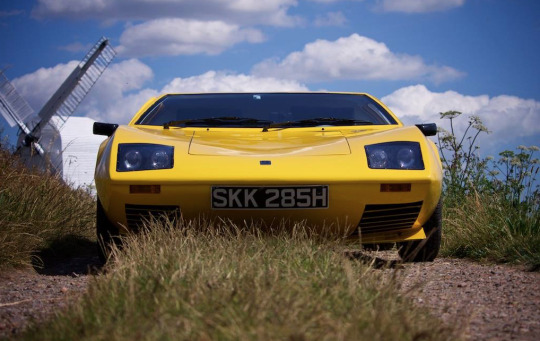
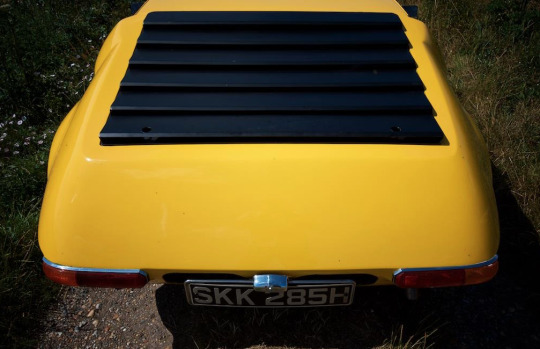

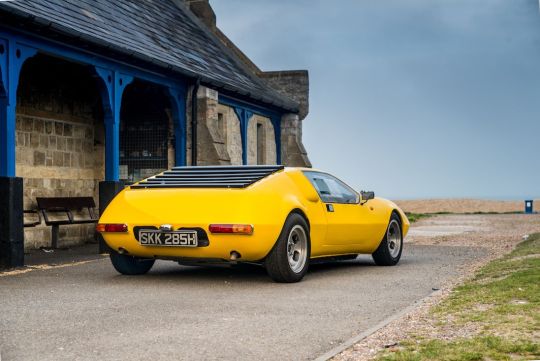

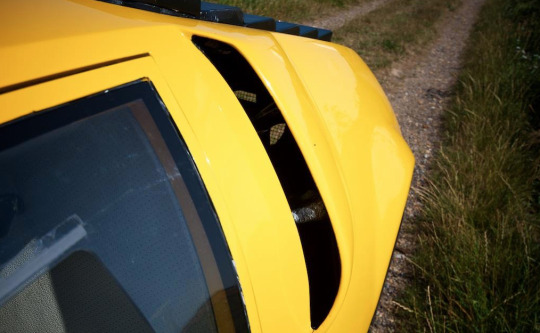
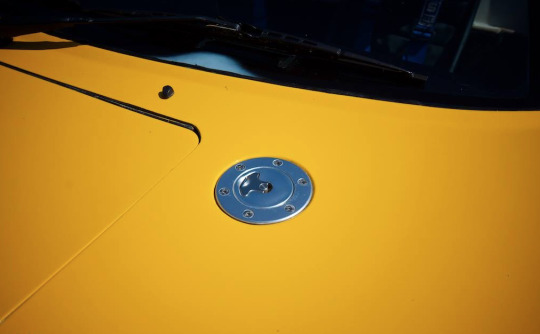

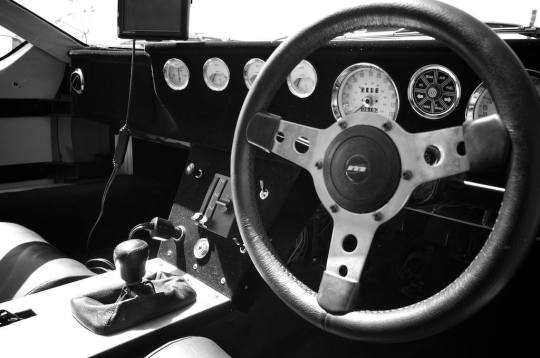
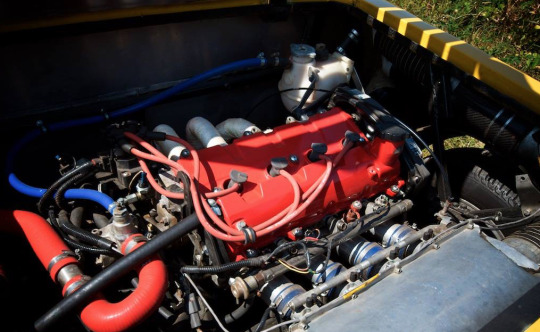
Gilbern T11 (prototype).
Gilbern is not a name that immediately springs to mind when you think of classic British sports cars. In fact not many people know about the former car maker that hailed from Wales. And even fewer are aware of its exciting two seat, rear engined sports coupe project from the 1970s. Founded in 1959 by Giles Smith and Bernard Friese, Gilbern was Wales’ only car maker. Both the former butcher and the former German Army soldier succeeded in building a car company from nothing and for a time challenged the likes of Jaguar and Rover with the Gilbern Genie V6. By the time the company folded in 1974, over 1000 Gilbern’s had been built.
The story of the Gilbern T11 starts back in 1970 when the Welsh car manufacturer was looking for ways to expand their model range. While their fibre glass bodied cars proved popular, they were expensive and never sold in large numbers. As a result the small firm struggled financially and needed something different to turn their fortunes around. They decided to build a light and compact, rear engine, two seat sports coupe, handing over the design to Trevor Fiore. The project went from the clay model design stage to the production of a partially built prototype. The aim was to display the car at the 1971 Geneva Motor Show but that never happened. As the firm’s finances worsened, the project was cancelled and the T11 prototype along with the other three prototype chassis’ were abandoned.
When the firm finally went bankrupt in 1974, the partly assembled Gilbern T11 was taken home by its managing director where it stayed for a number of years. It was then passed on to the Gilbern Owners Club before changing hands again. The task that the new owner lay ahead was huge. First of all he had acquired a car that had sat for decades. Then there was the fact it was an unfinished prototype. Restoring an old classic is one thing but finishing a car that never got beyond the prototype stage is another. Thankfully owner background as a mechanic meant he had the skills needed to get it done. And he had a vision that allowed him to put his own stamp on Gilbern’s wedge. If it had been anyone else I suspect the car would still be in pieces today.
The Trevor Fiore’s design really was a work of art, taking cues from many other exotic sports cars of the day. Its design echoes that of the De Tomaso Mangusta, the Ferrari Daytona and the Bitter CD. And of course there is the Montiverdi Hai 450SS. The similarities between the two are uncanny. While the Gilbern T11 did not have a V12 or a V8 powerplant, it made up for this with its striking overall design. You could park this car beside a Lamborghini Miura or a De Tomaso Mangusta and it would not look out of place. It looks that good! It does make me wonder then what Gilbern could have achieved if they had succeeded in taking the T11 to full production.
#Gilbern T11#Jaguar#Rover#De Tomaso Mangusta#Ferrari Daytona#Bitter CD#Montiverdi Hai 450SS#Lamborghini Miura
92 notes
·
View notes
Photo

Emlyn Williams (deceased)
Gender: Male
Sexuality: Bisexual
DOB: 26 November 1905
RIP: 25 September 1987
Ethnicity: White - Welsh
Occupation: Screenwriter, playwright, writer, actor, director
#Emlyn Williams#bisexuality#lgbt history#bisexual people#lgbt#male#bisexual#1905#rip#historical#white#welsh#screenwriter#playwright#writer#actor#director
72 notes
·
View notes